Fire, water, air... three elements, one aircraft: Canadair's mighty CL-215!
The fact that the invention of the aeroplane and the mastery of flight has changed the world is a commonplace that no one will contradict. It becomes more concrete when we take a closer look at an area where the use of aeroplanes makes things possible that were previously unthinkable: fighting forest fires benefits significantly from the possibilities of the aeroplane. Particularly when it comes to containing large-scale fires, aircraft can quickly and precisely drop huge quantities of extinguishing agent into defined target zones in order to either extinguish the source of the fire directly or contain it.
It is interesting to note that aircraft are not only used to drop extinguishing agents, but have also made themselves indispensable in two other roles in fighting large-scale fires. Specially adapted "jumper planes", as they are known, transport specially trained firefighters into the danger zone, who then parachute down to land in areas that can no longer be reached from the ground. It is easy to imagine how dangerous these missions are for both the aircraft crews and the "jumper" firefighters; tragic incidents and fatalities unfortunately bear witness time and again to the high risk inherent in this work.
Another role in which aeroplanes have enabled a whole new quality is fire observation. On the one hand, this can mean monitoring potentially endangered areas before a fire breaks out, but above all it refers to those missions in which an operations controller in an aircraft circling directly over the fire area can make assessments, take decisions and coordinate the actions of the firefighters on the ground and the firefighting aircraft in the air.
About the Canadair CL-215
Having said this, it is probably not surprising that not only have existing aircraft designs been modified to meet the challenges of aerial firefighting, but they have also been designed specifically for this task. The Canadair CL-215 shown here can lay claim to being one of the first specially designed firefighting aircraft. It was not for nothing that the project was formulated at a symposium on forest firefighting in Ottawa in 1963 and handed over to the aircraft manufacturer Canadair; the prototype of the new firefighting aircraft took off for its maiden flight in October 1967.
The Canadair CL-215 is certainly an impressive and powerful aircraft which, similar to military aircraft, is designed for robustness, ease of maintenance and powerful performance. This is reflected, for example, in the engine configuration: two Pratt & Whitney R-2800 radial engines with a roaring 2,500 hp output give the construction, which weighs around 19,000 kg loaded, the necessary power and manoeuvrability. The 19.80m long CL-215 has a wingspan of 28.60m and a range of around 2000 kilometres at a cruising speed of 291km/h (at an altitude of 3500m).
An ingenious system of flaps allows the pilots to drop their liquid load with pinpoint accuracy. This load comprises 455 litres of water and extinguishing concentrate; in addition, there are 710 litres of extinguishing concentrate in separate tanks on board. The water is taken up in a "touch and go" process, in which two special tank scoops are extended at a speed of around 150 km/h just above the water surface, through which the tanks are refilled in a matter of seconds. The tank contents are emptied via two flaps in the bottom of the fuselage.
The Canadian province of Quebec, with 20 CL-215s in service, and the French Civil Defence, with 10, were the first owners to adopt the new amphibious type for surveillance and firefighting. By the end of the production period, which lasted a respectable twenty-one years, a total of 125 of these powerful fire-fighting aircraft had been manufactured. At the beginning of the 1990s, production was switched to the improved CL-415 equipped with turboprops, which was to be manufactured until 2015. Both types are still in widespread use. Countries bordering the Mediterranean such as Greece, Spain, Portugal and Turkey still use the two types today, and many holidaymakers have already experienced Canadair's large amphibian in the fight against seasonal forest fires. So it's no wonder that the CL-215/415 is one of the best-known silhouettes when it comes to large fire-fighting aircraft!
My model shows the Canadair CL-215 "1045" of the Greek Air Force as it looked in November 2014.
Kit and building process
The kit on which the model is based dates back to 1980 and can therefore be counted among the model "oldies". But that doesn't have to be a disadvantage - quite the opposite! I was particularly pleased about two circumstances: on the one hand, a moulding peculiarity of those days could be rectified quite easily and perhaps even to the advantage of the construction: the kit parts literally stare at disproportionately large rows of rivets, which the sheet metal joints, some of which are raised, did not want to match in terms of oversize. Why wasn't this a problem, or even something I liked? The original actually shows rows of rivets and the panel joints look rather shirt-sleeved, sometimes overlapping each other. Using only recessed panelling lines on the model would not have come close to the original. The exaggerated height of the rivets (and the raised structures) can be easily corrected with sandpaper. Incidentally, the glued seams are mostly positioned in such a way that no damage needs to be caused to the raised structures when serging them.
The second thing I liked about the aged Heller model was the excellent accuracy of fit of the parts. As a result, the build was completed quite quickly, which in turn left me with the energy and motivation to add the etched parts set for the interior and exterior from "NH Details". This is a real gain and can be recommended in good conscience as a sensible (and small) investment. The cockpit and the engine detail in particular benefit, but other areas also look much better with the etched parts. The two airflow stabilisers on the wings should be mentioned here, for example. The details around the Muring system on the nose were created in-house and rebuilt from wire and sheet metal parts. The pitot tube and antenna system are also home-made from matching wire pins.
The decals are - as always with Heller - of excellent quality. Nevertheless and for the sake of simplicity, I masked off the red stripes on the fuselage together with the red areas on the wings and sprayed them with an airbrush; this ensured that the same shade of red would be found in all these areas.
In conclusion, I can only recommend this kit. This is not only due to the fact that Heller is still the only supplier of this unconventionally beautiful and important aircraft type, but also due to the fact that the kit is a pleasure to build despite its age and can also meet today's requirements with a little "touching up"!

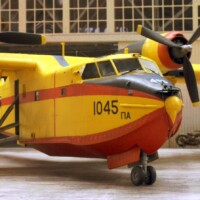
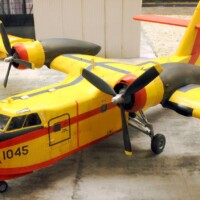
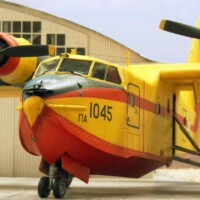
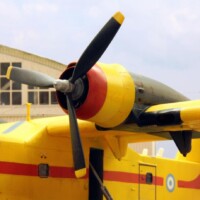
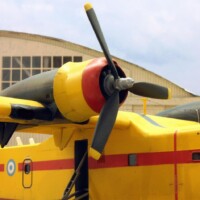
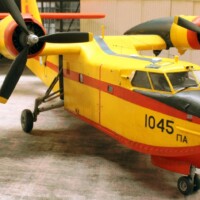
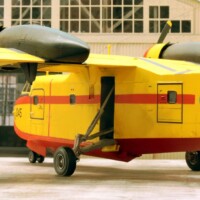
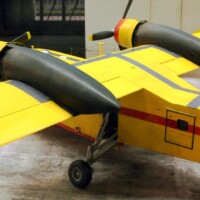
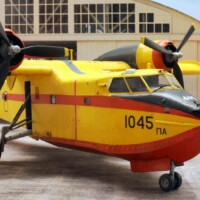
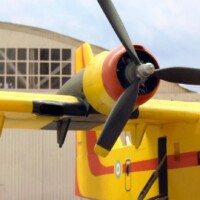
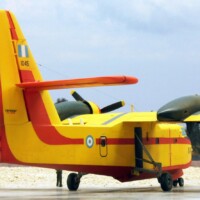

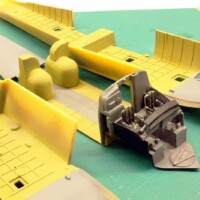
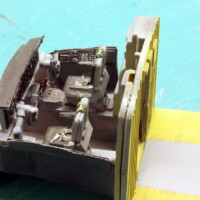
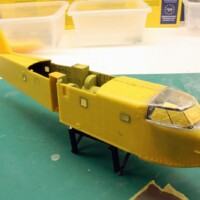

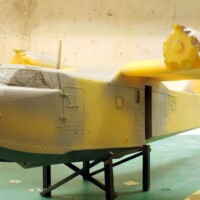
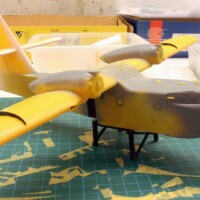
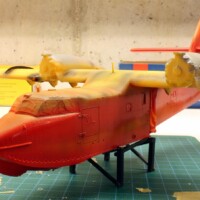


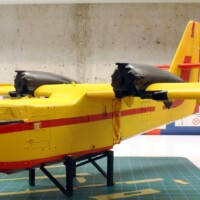
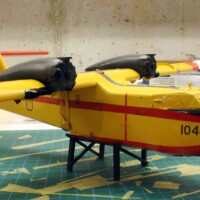
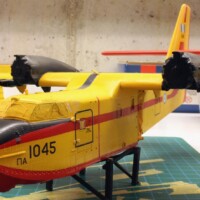
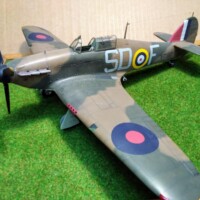

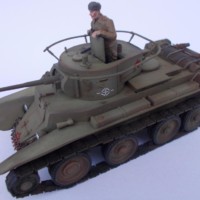
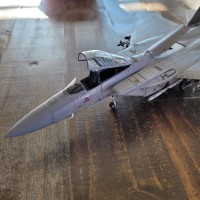
Congratulations, Roland!
What a superb result! Upon seeing the headlines article I thought it was a pic of the real thing!
Thank you, my friend - your words are very much appreciated!
Fantastic result, Roland @rosachsenhofer
A very important aircraft still being used in various countries.
Thanks for sharing the clear and informative article.
Thank you John for your feedback, that motivates me!
It’s a decent enough kit..my wife is a wildlife photographer and from some years we lived in a converted forestry station close to the fire base frequently used fighting wildfires in our area- she has images of the 415/515…I’d love to track down the (Amodel?) Martin Mars kit…it’s proper huge…there are way too few kits of firefighting aircraft…no Air Tractor for one..watching a trio of them do their dance from water to fire, led by spotter place was really memorable…as is being on our boat with a cl 415 circling above!
Thank you for your words, very interesting - and agreeable - what you say about models of fire-fighting aeroplanes. At the beginning of the year, I decided to make this a "theme of the year". A second fire fighter has already been completed: Alarge DC-10 airtanker...
Simply marvellous, Roland and some great notation on the build.
Yellow is one of my toughest colours, and yours finish beautifully.
I got my kit for Christmas one year, I still haven’t opened it.
My daughter fought forest fires in Northern Ontario based out of Pickle Lake.
She tells me she remembers the alarms from the plane so the firefighters were clear of any water coming down.
1 attached image. Click to enlarge.
What an amazing reference to the Cl-215- and what an amazing bidl from you- thank you very much for this comment!
Great build. I love those fire-fighting planes. a CL- 215 and a CL-415 are waiting in my stash along with some others as a "Neptune", "Orion", "Tracker" or "Skycrane", even a "Transall" to be converted into firefighters.
That sounds promising! Thank you for your words!
Well done Roland.
Thank you Allan!
Great build Roland of an amazingly effective workhorse!
Effective workhorse- how true! Thanks you, Jim!
Yet another great posting from you, Roland, thank you for sharing it with us.
Thank you for these words, George!
My father had a friend who was interesting in flying with the company who does this work. He rode along on one flight. Which involve flying up a box canyon with a full load of water and then releasing the water at the last second. Had they not release the water at the last second they'd been toast and with all of that weight being released they zoom climbed out of the blind canyon. That flight cured his ambition of being a water bomber pilot.
Great build and kit. These aircraft will be with us for along time with fire seasons coming earlier and for longer times. I've seen some at my local airport, they are built like tanks.
What a gripping story! Thank you for sharing and for your words!
Well done, Roland.
Red and Yellow...Bold undertaking... Nice job!
Gary, thank you...!
Roland:
Congratulations on your spectacular CL-215 build! Thanks for sharing the pix with us.
Your words are quite appreciated - thank you!
Awesome Canadair! I frequently see them roaming the skies during late spring and summer here in my area and often during vacations elsewhere in the country.
The last decade or so has been terrible when it comes to forest fires, both in their numbers and damage/mortality ratio here in Portugal, so more Canadairs (amongst other planes) have been rented or purchased to strengthen the air fight of the fires.
The Airforce has also acquired a number of the Augusta-Westland 119 Mk2 Koala to give further response for summer demands. These helicopters came with a special firefight equipment to be used when in such role.
Splendid model Roland, thumbs up!
Thank you, Pedro. We must never forget the important work that these fire-fighting aircraft do.
That is a real winner! Colorful, big, and nicely finished - well done!
Words that make me happy - thank you, Greg!
Another classic! Terrific info too
Thank you for these words!